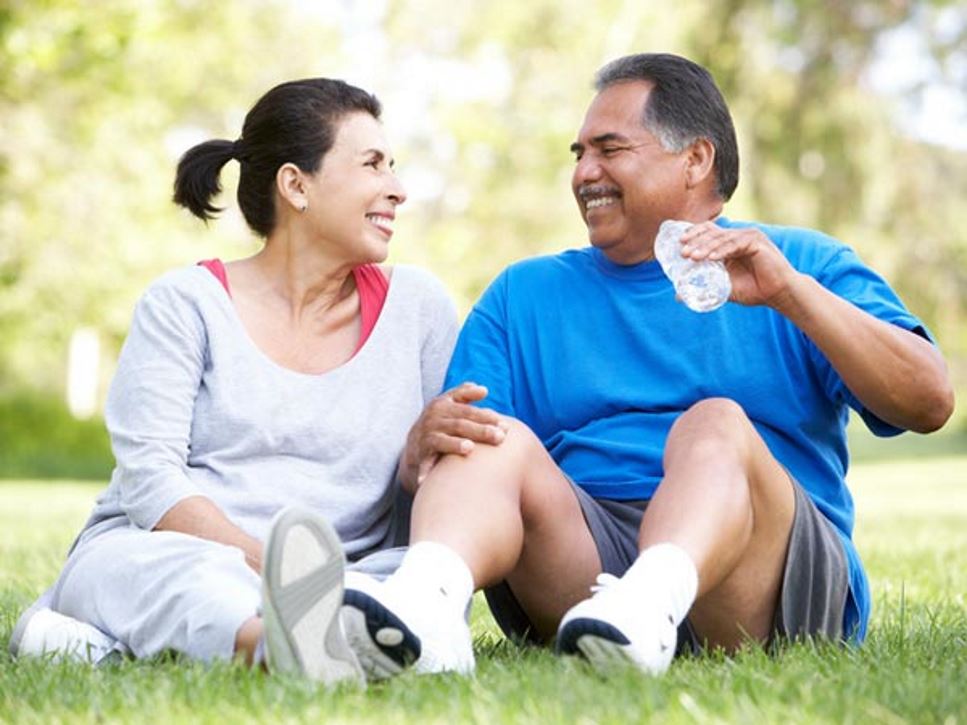Adults need at least 150 minutes of moderate-intensity physical activity per week. Experts recommend aerobic activity as well as resistance and strength exercises at least twice per week.
Fight Diabetes with Physical Activity
Exercise may delay the onset of Type 2 diabetes and improve diabetes control. Whether you are at risk for diabetes or are looking for ways to help keep your blood sugar levels in check, get moving!
Physical activity:
- Raises your heart rate. Whether by walking briskly, jogging, bicycling or swimming, being active gets your heart pumping, which helps your body use insulin more efficiently.
- Improves blood circulation. Physical activity also helps the blood get flowing to all organs, especially the kidneys, brain, heart and eyes, which can be injured by poor diabetes management.
- Decreases risk of heart disease. Regular activity can help reduce your risk of heart disease by playing a role in lowering blood pressure and may improve high-density lipoprotein (HDL) levels.
- Reduces stress. Stress can increase your risk for developing diabetes. And, for people with diabetes, stress can make it harder to manage the condition.
- Lowers blood sugar and A1c. Being physically active when you have diabetes helps to lower blood sugar, even hours later, and reduce A1c levels over time. It also may improve protein and fat metabolism, slowing organ damage.
Check In with Your Doctor
If you’ve been diagnosed with diabetes or any other health concern, check with your doctor before beginning a new physical activity program. If you are taking insulin, you need to keep a close eye on your carbohydrate intake and how you feel. If your medicine dose is not adjusted properly, you may be at risk for hypoglycemia. Be sure to have a plan and quick-acting sources of carbohydrates to treat low blood sugar, if it occurs.
Whether starting your first exercise program or training for an endurance event — such as a marathon or triathlon — increase your training slowly, check your blood sugars, and fuel and hydrate before, during and after exercising. Your goal is to be in the blood glucose range that your health care provider recommends. As your fitness improves, you will reap greater health benefits.
Pick an Activity
Did you know that dancing and gardening count as physical activity? Cleaning counts toward your activity minutes, too. Some examples of aerobic activities are walking (including at the grocery store and mall), stationary and outdoor bicycling, swimming, badminton, mowing the lawn and mopping or scrubbing the floor.
You don't need to get all your physical activity done at one time — spread it throughout the day and week. Start slowly and build from where you are, then mix it up. Remember, you don't have to do it all at once; start with as little as 5 minutes and then build up gradually. Try different activities to keep you going and engaged.
Resistance exercise includes activities that increase strength and muscle mass. Some examples include body weight exercises such as push-ups and lunges, those that use resistance bands or free weights, as well as everyday activities such as carrying groceries and gardening.
Fuel Smart for Activity
Your new activity routine may require some changes to how you eat. If you have diabetes, increasing your activity may lower your blood sugar and your health care provider might need to adjust your diabetes medicine. A registered dietitian nutritionist can help you adjust your meal plan so you have the right fuel for your body.
- Before: A small carbohydrate snack with some protein provides enduring energy for your activity.
- During: If you're exercising for more than one hour, you may need additional carbohydrates during activity to prevent low blood sugar.
- After: If you exercise for more than an hour, refuel with a post-workout snack.
Fluids also are important before, during and after physical activity to prevent dehydration. Stay hydrated by drinking water. Additional types of fluids may be needed during prolonged exercise and in hot weather.
3-Step Beginner Walking Plan
Step 1: Get Ready!
- Wear comfortable clothes and supportive shoes.
- Set aside time each day for your new activity.
- Plan your route. An outdoor trail, a gym treadmill, a museum or a shopping mall — there are plenty of options to accommodate for any weather conditions. Recruit a friend or listen to your favorite music or podcast.
Step 2: Get Set!
- Go at a comfortable pace for you. Ask your doctor for your safe target heart rate.
- Try setting a goal based on time or distance and increasing either your distance or time spent every week until you meet your goal.
Step 3: Go!
- Keep a record of your daily and weekly time or distance goals and achievements.
- If you have diabetes, also record your blood sugar readings before and after exercising.
- Writing down your progress lets you see your accomplishments and increases your opportunity for success.
References
Find a Nutrition Expert
Looking for credible nutrition information and recommendations? The Academy of Nutrition and Dietetics' network of credentialed food and nutrition practitioners are ready to help!

